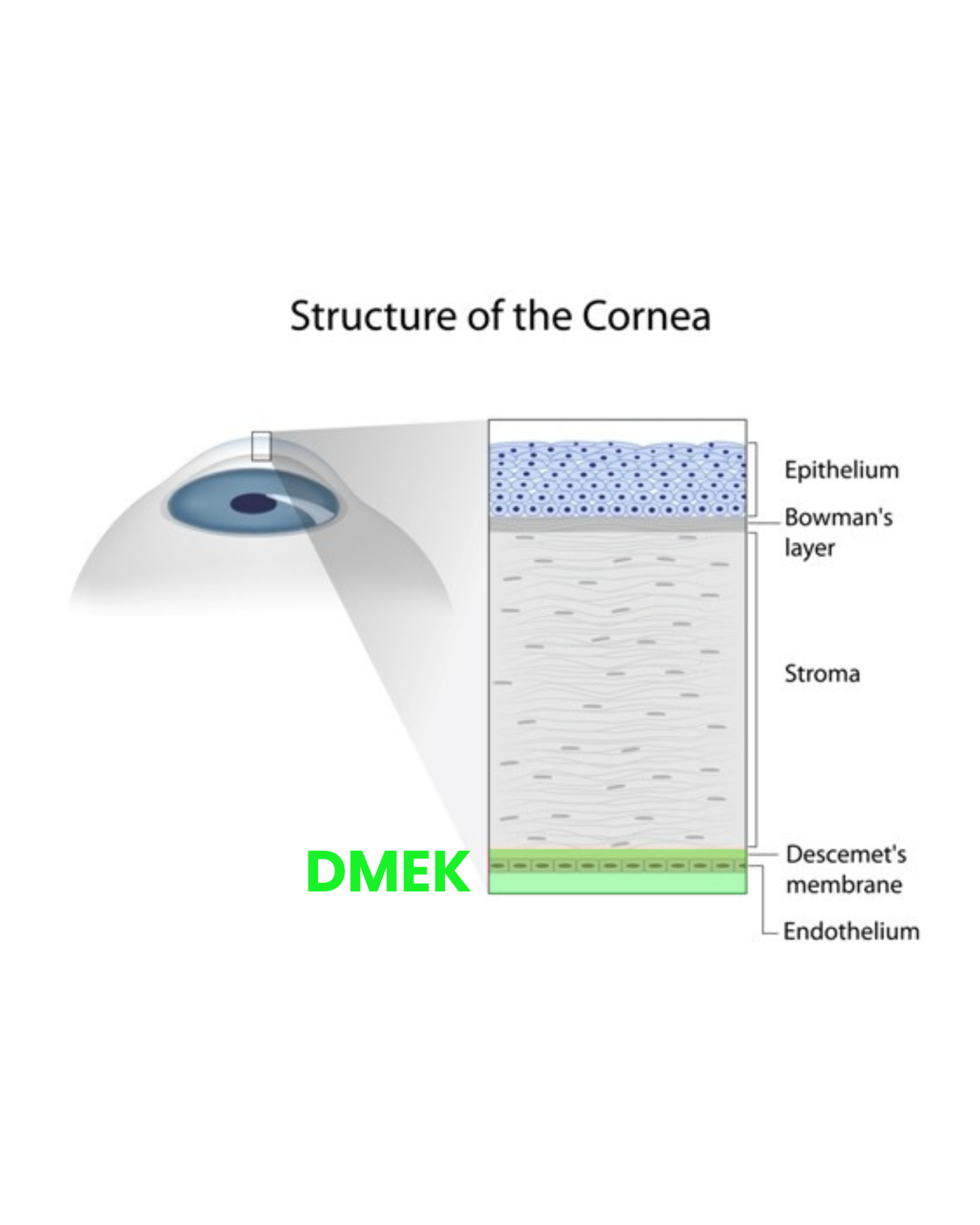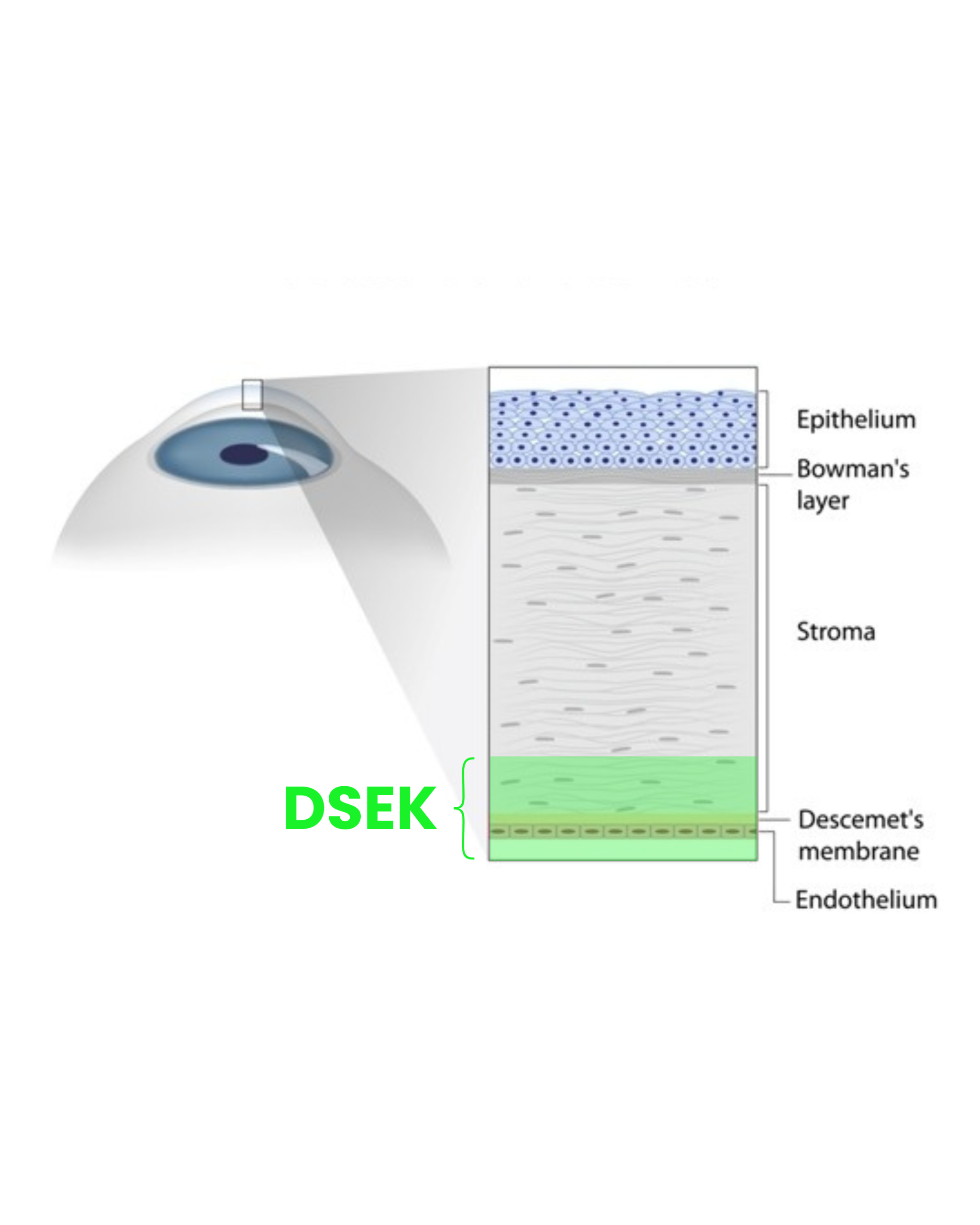A Minimally Invasive Modern Approach to Corneal Transplantation
What is endothelial keratoplasty?
Endothelial keratoplasty (EK) is a minimally invasive corneal transplant technique that aims to improve the vision when this is affected by conditions of the corneal endothelium, such as Fuch’s endothelial dystrophy.
There are 2 types of EK: DSEK and DMEK
In endothelial keratoplasty only the affected innermost layer of the cornea, the endothelium, is replaced while leaving the healthy outer layers intact. This selective partial-thickness approach has revolutionised corneal transplantation, offering faster recovery times and lower rejection rates compared to traditional full-thickness transplants.
Recovery and Healing Timeline
DSEK and DMEK have a significantly shorter recovery period compared to penetrating keratoplasty (PK) and deep anterior lamellar keratoplasty (DALK). Most patients experience noticeable vision improvement within weeks to a few months, with continued refinement over 6 to 12 months. Since EK does not require extensive corneal suturing, the visual recovery is faster and more predictable with less astigmatism and need for strong glasses or contact lenses.
The procedure itself is performed under local anaesthesia and is generally painless. Patients may feel mild discomfort or a foreign body sensation for a few days after surgery. Unlike PK and DALK, where stitches stay in place for 18-24 months, endothelial grafts adhere naturally with an air or gas bubble, significantly reducing the healing time.
Indications: When is DSEK or DMEK needed?
EK is primarily used for conditions where endothelial cell dysfunction leads to corneal swelling (oedema) and vision loss. The most common reasons for needing DSEK or DMEK include:
- Fuchs’ endothelial dystrophy: A degenerative condition where the endothelial cells of the cornea progressive stop functioning normally or die prematurely, causing glare, corneal swelling (oedema) and cloudy vision.
- Bullous keratopathy: Swelling of the cornea due to endothelial failure, often caused by previous eye surgery, such as cataract surgery, or trauma.
- Posterior polymorphous dystrophy (PPD): A rare dystrophy of the cornea affecting the corneal endothelium and Descement’s membrane, occasionally causing swelling of the cornea due to endothelial cells not functioning well.
- Failed previous corneal transplant: Patients with prior penetrating or endothelial keratoplasty who develop graft rejection or failure may benefit from DSEK or DMEK as a repeat procedure.
- Congenital Hereditary Endothelial Dystrophy (CHED): A rare genetic disorder that affects the endothelium causing corneal swelling and clouding from birth.
By selectively replacing the endothelial layer rather than the entire cornea, EK provides a safer and more effective alternative for patients with endothelial dysfunction.





